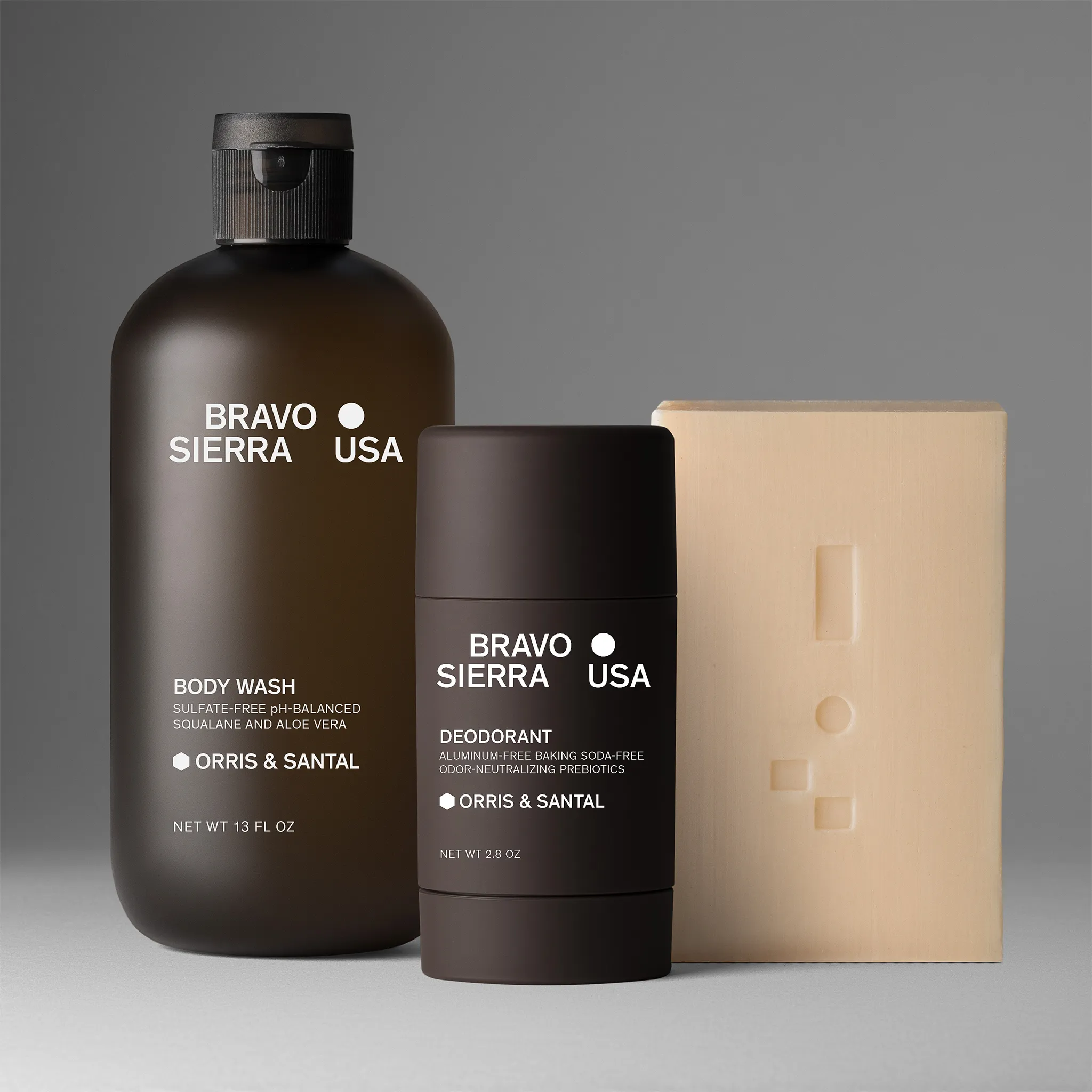If choosing the right product photography backdrop for your e-commerce images sounds like a one-second decision, you are either a professional photographer or haven't recognized the sheer importance of the process. The perfect product photography background can increase CTR (click-through rate), reduce post-editing costs, evoke emotions, enhance merchant rankings, and strengthen brand recognition.
This guide clearly explains this key part of product photography so you can get the most out of it.
Why Use Product Photography Backdrops?
Let's start the conversation with the reasons for using some prop to shoot the object against that makes it so important:
Put a Product in the Spotlight
Fundamentally, you need your product to shine and the rest to be a background, so you use a product photography background.
However, sometimes this supporting actor adds another dimension to the show's star or even outshines them.
Capture User's Attention and Drive CTR
A colorful background can capture users' attention in an information-dense space like a social media feed.

Shape Brand Identity
By consistently using some color or texture, you can contribute to the recognition of your brand, where a user associates a vintage, marble, or sequin photo background with your product.

Instill Professional Consistency
In an e-commerce business where the same items are traded on multiple platforms, a user-friendly, intuitive web design can help retain customers. At the same time, inconsistency contributes to an unprofessional appearance and may deter potential clients. Merchants using backdrops for product photography ensure a consistent feel and look across categories and product pages.
Introduce Contrast and Drama
A product photography background can be used against a contrasting-color table surface to invite a dramatic effect. See below how we combined shadows, a black backdrop, and a white table to echo the black and white design of Dr. Bradley's products.

Reduce the Post-Editing Work
Professional photo equipment is designed for easy use, allowing you to keep things spotless with minimal effort by wiping off vinyl or quickly washing a cloth. Once you have a homogeneous, spotless layer of color at the back of a photographed object, post-editing tasks boil down to resizing and manipulating the product.
Trigger Emotional Response and Create a Sentiment
A pink or sequin background oozes femininity, while a retro or wooden one is more associated with masculinity. While the statement sounds sexist, it's also true, so if you need to make a product image of a female cosmetic product, using sequins will add some glitz and glam to it.

Align with E-commerce Marketplace Standards
Many marketplaces, such as Amazon and eBay, have strict product photo requirements to create a harmonious user browsing experience.
Match Your Product Backdrop to the Distribution Channel
Product photography backdrops can be creative or classy, colorful or black and white, brand-affirming, or universal.
Choosing the right background for your product images enhances the user experience within the context of a specific distribution channel. You want to showcase your product design against a white background on your online shop's product page, but you also want it to stand out and grab attention in your Instagram feed.
Types of Photo Backgrounds
Product photography backgrounds are available for every budget, purpose, and taste, including small businesses. Options range from small photo studio box kits for $50 to complex rolling backdrop systems for thousands of dollars. Let's examine the major types.
BY MODEL
Backdrops are an essential studio element, with options ranging from simple paper rolls to high-end roller systems. Let's break down the differences between backdrop types:
Rolls of material
If this is paper, fabric, or vinyl, many of the backdrops will come without support systems and are reusable. They'll come in rolls or as a single piece.
A paper option, for example, typically consists of heavyweight, solid-color rolls of paper that can be mounted on a stand or pinned against the wall. Its low cost and easy tear-off make it popular among both professionals and amateurs. It's also wrinkle-resistant, giving a smooth, endless backdrop for a photoshoot.
It comes in different colors and sizes, with minimal roll, usually 4.4 feet wide by 16 feet long.

Backdrop stands
Product photography background stands differ, but the simplest model has two steady tripod stands holding a horizontal crossbar for a paper roll. Such photo backdrop stand systems come with clamps, crossbars, and sandbags.

Ceiling roller systems
A professional photo studio will have a motorized system of background drives that allows remote background change. The roller system is usually mounted on the ceiling and has a few colors of background rolls.

BY MATERIALS
Some materials, like seamless paper, offer a creaseless experience. Others, like wood, are supposed to enrich an image with texture or a cozy feel, like furs.
These materials are most often used to produce professional photo backdrops:
- Paper (classy, universal, creaseless, seamless, colored, matt, or with slight reflective effect, may come with printed patterns)
- Cloth (washable, silky, seamless)
- Muslin
- Plexiglass (reflective, glossy, durable)
- Rose cloth (textured flower cloth gives many dimensions to an image)
- Sequin (textured and glamorous)
- Vinyl (durable and seamless)
- Wood (textured and vintage)
- Marble (classy, reflective, and heavy)

Naturally, there are various types of props, ranging from inexpensive to expensive, single-use to durable. If you want to create a DIY product image quickly, consider using a piece of white cardboard as a backdrop. Consider investing in a mountable, motorized system if you require a commercial-grade roller system.
When selecting a perfect backdrop for new products, the material used to create the equipment matters for these reasons: budget, durability, transportability, waterproofness, reflective characteristics, susceptibility to creases, and universal qualities (you are likely to use glittery or textured designs less often than plain, black-and-white ones).
7 Tips on How to Choose the Right Backdrop for Product Photography
For those struggling with how to choose a good studio product backdrop, the below algorithm may come in handy.
- Think of the budget
If you only have $50 for the entire shoot (shout out to all e-commerce beginners), you'd better get a tripod and use cardboard from a dollar store for a background.
When purchasing photo equipment, specifically a versatile backdrop for product photography, consider durability, expected lifespan, and return on investment (ROI). You could use a cheaper version or a substitute if you only need it for a short time.
- Account for deadlines and time restraints
Professional photo background systems that require mounting on a wall or ceiling can be expensive and, in terms of shipping, may take weeks or even months if ordered from overseas. Consider your deadlines — are you prepared to wait for a sea shipment to save a few hundred dollars on delivery?
The best backdrops for product photography typically come from specialty stores with established reputations, offering smooth ordering and delivery processes. That said, custom equipment for bigger studio setups will take more time to procure, produce, and mount than standardized sets.
- Think of the distribution channel when choosing backdrop product photography
Marketplaces call for white backgrounds — no, they mandate white backgrounds. However, social media invites all sorts of creative, colored, and textured ones.
A colored photography surface to shoot against is limiting. It changes the vibe of the image. If misused or to complement the product, it can overpower it.

- Consider texture when choosing your backdrop for product photography
Simple shapes can stand out against textured backgrounds, such as sequins or floral fabrics, adding glamour to a sleek bag or boldness to leather accessories and men's perfumes.
Plexiglas provides a reflective surface, which is ideal for capturing an extra layer of an object. However, be mindful of fingerprints and dust — always wipe them clean before taking a shot.
Some vinyl backdrops also reflect light; test them in-store with various lighting setups to check for reflections.
5. Add creative angles: smoke, water, light
Some more imaginative types of product photography, like hero shots and commercial advertising, call for extra layers. These are some of the creative background ideas for your next product shoot:
- Smoke can add a bit of mystery to a shot.
- Water can be dispersed to create a rainbow effect at the back.
- Light can be put through shades or palm trees to provide a creative shadow for added emotional impact.
- You can also add a foreground, like a glass with water drops, to mimic the effect of looking out onto an object through a window during a rainstorm.
- A mirror can also be used as a background on rare occasions. However, you'll need to do much planning to edit out a product photographer.
- Falling objects like feathers, flowers, or snowflakes can be captured or edited during retouching.

- Consider color compatibility
Choose a background color that complements the product without overpowering it. Neutral colors like white, gray, or beige work well for most products.
Specific colors can also enhance the look of certain items. Warmer backgrounds, like beige or light brown, can complement natural or organic products, while cooler tones can enhance tech gadgets or metallic items.
- Use backgrounds to reflect brand identity
The backdrop should align with the brand's image. For instance, a high-end brand might use sleek, minimalist backdrops with a matte finish, while a playful or eco-friendly brand might choose more natural settings. The choice of backdrop reinforces brand identity and makes the product more relatable to the target audience.
Overall, a product photography backdrop can play the leading role on your set or serve as an invisible assistant — just helping make the photographed item look more prominent or ordinary, uniform or unique, contrasting or homogeneous.

Quick Checklist for Choosing Backdrops
If you don’t have time to overthink it, run your choice through this simple checklist. A backdrop that ticks most of these boxes is usually the right one:
- Budget-friendly – Does it fit within your current budget without cutting corners on quality?
- Brand-aligned – Does the color, texture, or finish support the identity of your brand?
- Marketplace-approved – Does it meet the requirements of the platforms you plan to sell on (Amazon, eBay, Etsy)?
- Durable & practical – Will it last multiple shoots without wrinkling, tearing, or warping?
- Lighting-compatible – Does the surface reflect or absorb light in a way that complements your product?
- Easy to handle – Can you store, transport, and set it up without hassle?
- Versatile – Can you use it across different products, collections, or campaigns?
FAQ on Product Photography Backgrounds
Can I use the same backdrop for all my products?
Yes — especially if your goal is consistency and professionalism. Many brands stick to one or two backdrops (often white and neutral gray) for their catalog images and save creative textures for campaign or social media content.
What backdrop is easiest to maintain?
Seamless paper is wrinkle-free and disposable, which makes it easy to replace when damaged. Vinyl is more durable, washable, and resistant to spills, but it requires careful storage to avoid creases.
What do marketplaces like Amazon require?
Amazon specifically mandates pure white (#FFFFFF) backgrounds for main listing images. eBay and Etsy are more flexible but still encourage clean, distraction-free backdrops. Always check the latest guidelines before uploading.
How do I stop shadows from ruining my product photos?
Shadows are usually a lighting issue, not a backdrop problem. Use diffused lighting (softboxes, umbrellas, or natural light through sheer curtains) to soften shadows. If you want to keep some shadows for drama, position your light at an angle and test how it interacts with the background.
Should I invest in one expensive backdrop system or several cheaper ones?
It depends on your product range and frequency of shoots. If you photograph regularly and need consistency, a professional roller system pays off long-term. If you only shoot occasionally or need variety, a set of affordable paper rolls in different colors will give you flexibility at a lower cost.

Product A
SQUARE SHOT





























